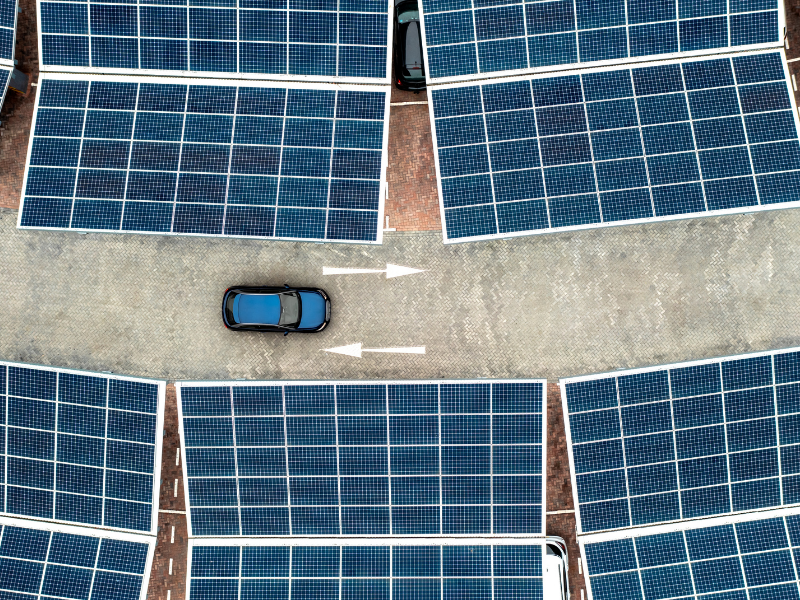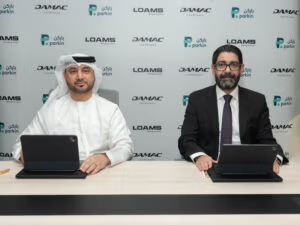As the UAE accelerates its push toward achieving Net Zero emissions by 2050, electric vehicles (EVs) are becoming more than just a sustainable transportation option; they’re evolving into powerful assets for the country’s energy infrastructure. By integrating EVs with the national power grid, the UAE aims to boost energy efficiency, lower carbon emissions, and enhance the overall stability of its electricity network.
Shane Moloney, a global energy expert and Managing Director of Rockboro Project Management, recently shared insights with us about the potential of technologies like Vehicle-to-Grid (V2G) and smart charging to help balance seasonal energy demand, particularly during the peak consumption of the summer months.
“EVs equipped with bidirectional charging capabilities can serve as mobile energy storage units. During the day, they can absorb surplus solar generation, a resource the UAE is increasingly investing in, and return that energy to the grid during peak evening hours when air conditioning demand surges. This time-shifting of load smooths the demand curve and reduces dependence on fossil-fuel-based peak-load plants,” he shared.

This intelligent time-shifting of energy helps flatten the demand curve and reduces dependency on fossil-fuel-powered peak-load plants.
Smart charging complements this by enabling demand-side energy management. Charging can be delayed, prioritized, or staggered in real time based on grid conditions, energy prices, and solar availability, turning EVs into flexible, grid-balancing tools when the power network is most vulnerable.
Moloney highlighted that grid-integrated EVs offer clear benefits to both sustainability and reliability, particularly in rapidly evolving urban centers like Dubai and Abu Dhabi.
“The intermittency of solar energy is a recognized challenge, particularly in a market like the UAE, where solar is abundant but variable. EVs can buffer this variability by storing excess solar power and discharging it during times of need, effectively turning electric cars into decentralized storage assets that support grid flexibility,” he noted.
He further added, “Regarding reliability, this decentralized capacity can reduce the risk of blackouts or brownouts during periods of extreme demand, especially in dense urban environments like Dubai and Abu Dhabi. With smart city frameworks already advancing in both emirates, EV-grid integration complements broader strategies. It diversifies the energy storage base and allows more responsive, distributed energy resources to support grid stability.”
Challenges Utilities Must Overcome
Despite its promise, widespread EV-grid integration presents several challenges for UAE utilities. Moloney noted that utilities face both technical and regulatory hurdles.
“Utilities face both technical and regulatory challenges. Technically, the most immediate issues are localized grid congestion, transformer overloading, and the lack of real-time visibility on EV charging patterns. A sudden, uncoordinated influx of EV charging can strain distribution networks not designed for such loads,” he exclaimed.
Regulatory and operational challenges include the absence of clear compensation mechanisms for energy returned to the grid, a lack of interoperability standards across EVs and chargers, and uncertainty around long-term battery degradation impacts, although intelligent charging protocols can mitigate this.
“There’s also a broader need for integrated planning, aligning transport electrification goals with utility infrastructure upgrades, and ensuring sufficient data sharing between vehicle operators, utilities, and urban planners,” Moloney continued.
The positive impacts of EV-smart grid integration are not limited to transportation. Shane then pointed out that EV batteries can accelerate decarbonization across multiple sectors by enabling better use of renewable energy and reducing reliance on high-emission backup generation.
For example, when EVs participate in vehicle-to-building (V2B) or vehicle-to-home (V2H) applications, they reduce load during high-cost or high-carbon-intensity periods. Over time, this functionality could align with broader demand response strategies, particularly in sectors like commercial real estate or public infrastructure, where smart energy management is gaining traction.
Over time, such strategies can feed into national demand response programs, bringing benefits to industries well beyond mobility.
The UAE as a Regional Leader in EV-Grid Innovation?
Shane believes that, with the right infrastructure and policies, the UAE could become a regional powerhouse in EV-grid integration. The launch of the National Bi-Directional Charging Infrastructure Initiative signals a major step forward, not just in technology, but in policy and strategic direction.
“The UAE has the vision, the digital foundation, and the investment capacity to lead the GCC in EV-grid integration,” Moloney affirmed.
To export this expertise across the region, he outlined four key priorities:
Standardization: Creating interoperability standards for chargers and vehicles for regional adoption.
Policy Frameworks: Developing compensation models and regulatory support for grid participation.
Demonstration Projects: Launching large-scale pilots in cities like Dubai or Abu Dhabi that deliver measurable results.
Cross-Sector Partnerships: Building bridges between automotive, utility, and technology players.
“With these building blocks in place, the UAE can export not just its technology, but its leadership,” noted Moloney: “This is an opportunity to define the energy future of the entire region.”






